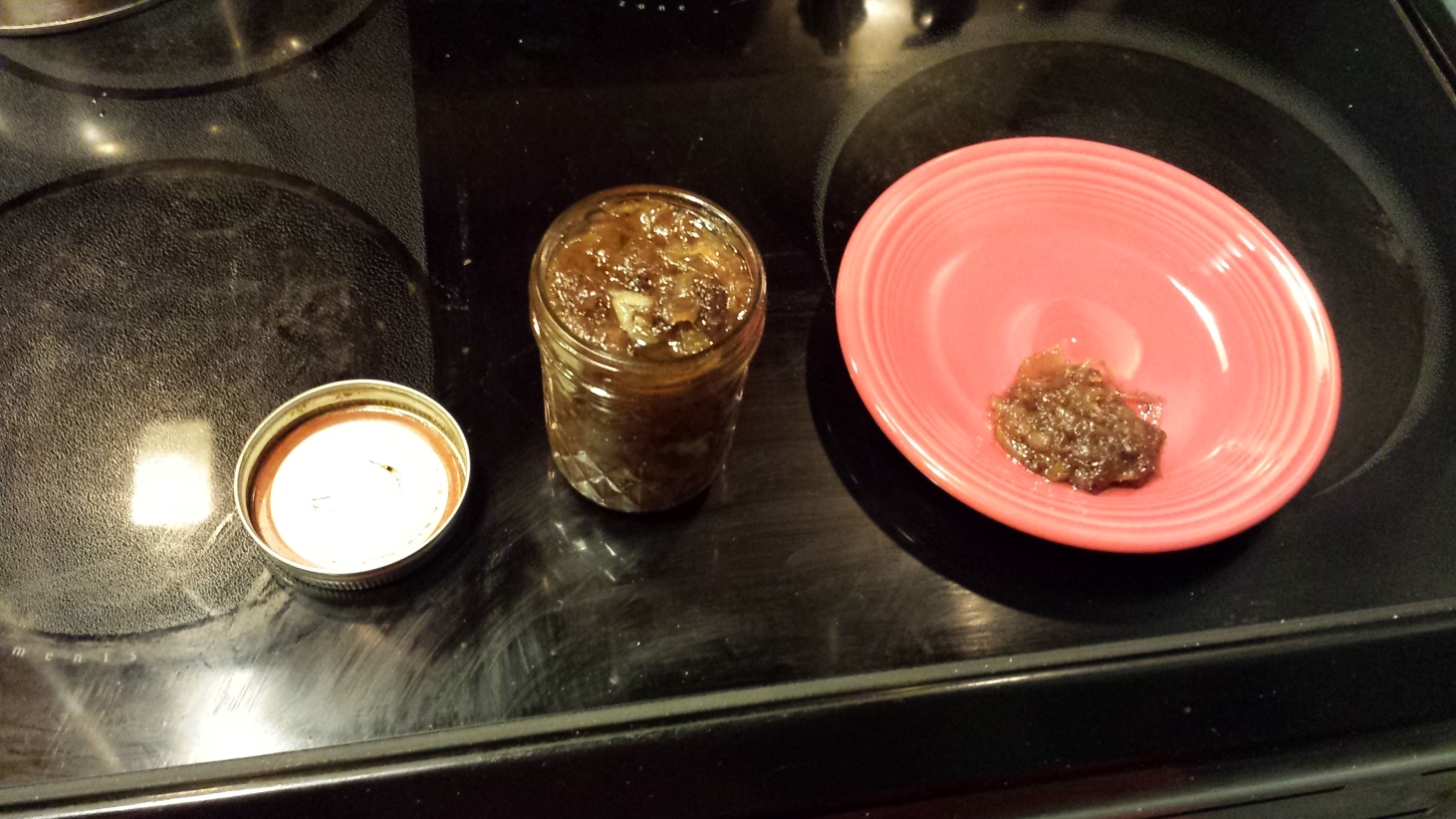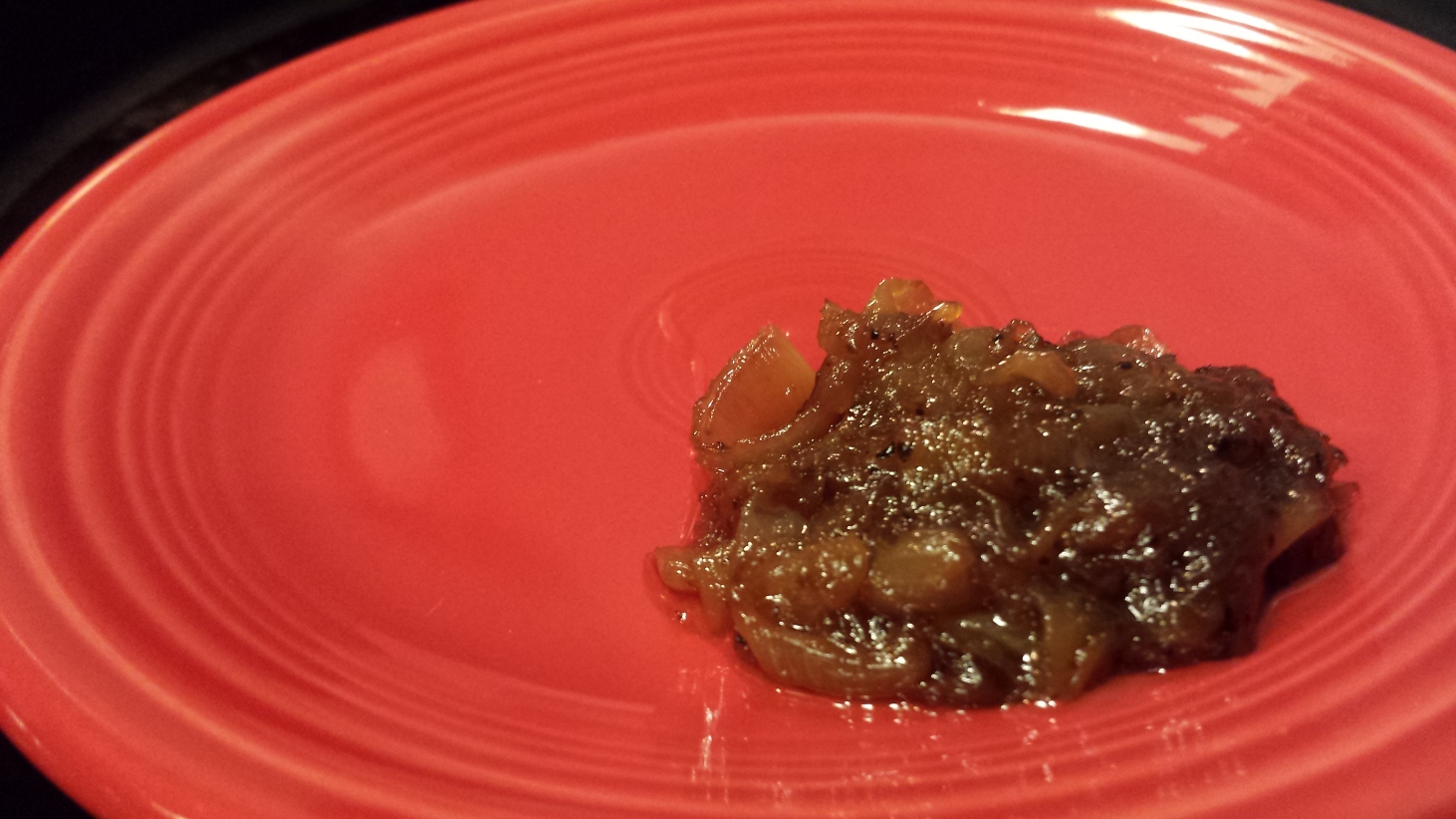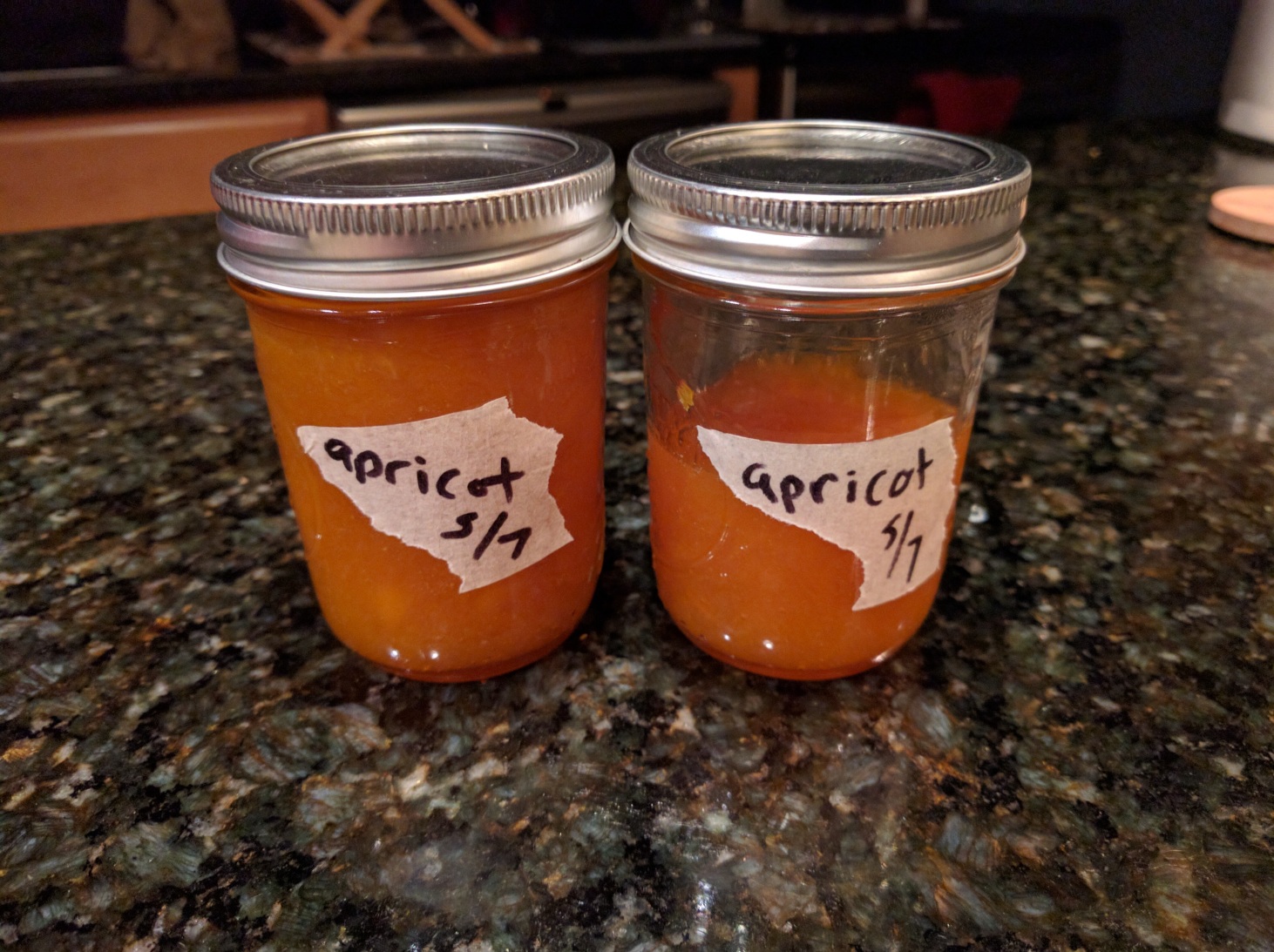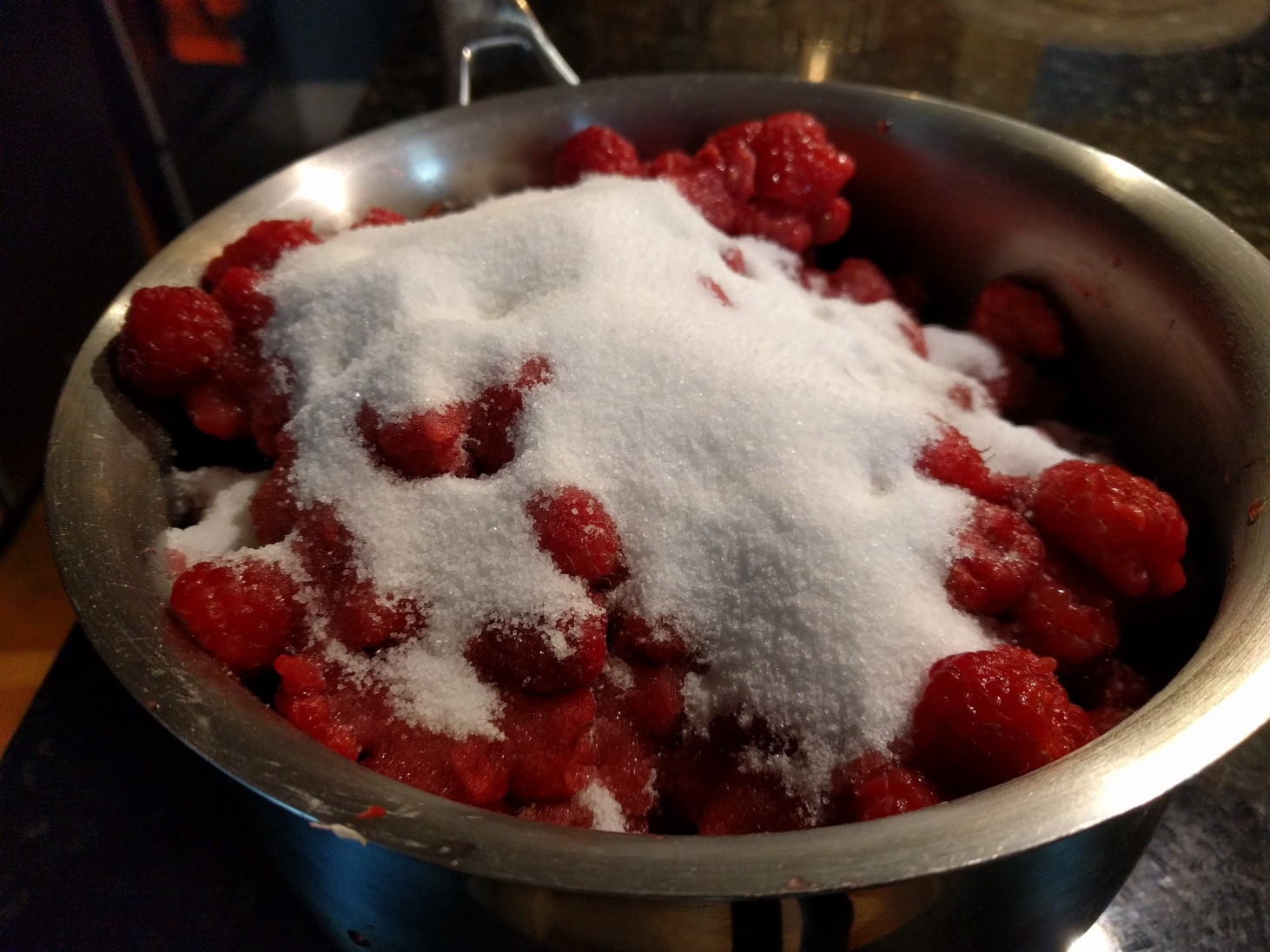Preserves up next:
- Asian Pear
- Banana
- Coconut
- Currant
- Gooseberry
- Meyer Lemon
- Pineapple
- Pumpkin
- Rhubarb
- Tart Cherry
- Watermelon
Preserves made thus far:
- Anjou Pear (use all but core, stem, and seeds)
- Apricots (use all but pit)
- Aronia berry (use entire thing)
- Bing Cherries (use all but pit and stem)
- Blackberry (use entire thing)
- Blueberry (use entire thing)
- Bosc Pear (use all but core, stem, and seeds)
- Concord Grape*
- Cranberry (use entire thing)
- Fuyu Persimmon (use all but core, stem, and seeds)
- Golden Delicious Apple (use all but core, stem, and seeds)
- Granny Smith Apple (use all but core, stem, and seeds)
- Grape Tomato*
- Grapefruit*
- Guava*
- Key Lime*
- Kiwi (use all but skin)
- Kumquat*
- Lemon*
- Lime*
- Mandarin*
- Mango (use all but pit and skin)
- Minneola*
- Mission Figs (use all but stem)
- Orange*
- Plum (use all but pit)
- Pomegranate (use seeds)*
- Raspberry (use entire thing)
- Red Delicious Apple (use all but core, stem, and seeds)
- Red Onion*
- Red Seedless Grape (use entire grape, no stems)
- Rose Petal (use all petals discarding stems)
- Shallot*
- Strawberry (use all but green leaves on top)
- Tamarind (use seedless paste loosened with water)
- Tejocote (use all but pit and stem)
- Yellow Onion*
* These require additional steps, which I’ll elaborate on further down this page.
Basic steps to making a preserve:
- Cut up fruit into bite size pieces or a little smaller. It depends how chunky you want it to be. I prefer more chunks and less jammy sugary fruit mash.
- Place in a saucepan over medium heat. Do not add any water or other liquid. The liquid will come out of the fruit.
- Add granulated sugar. Typical ratio for jams is 1 cup fruit to 1 cup sugar. However, I tend to make mine more tart and may use 20-25% less sugar. You can add a lesser amount and then add more if you want it to be sweeter.
- Bring mixture to a boil. Once at a boil, reduce heat until it is simmering.
- Let it simmer for a couple hours. Depending on the fruit and rate of simmer, cooking times will vary. It’s best to do this on a weekend when you can be around to watch it.
- Eventually, the mixture will start sticking to the spoon. Upon licking the spoon, you’ll be able to tell it’s gotten thicker and is no longer just running off the spoon like a sauce would. At this point, the temperature should have reached 220 or more. This is jelly stage.
- Now, you should add pectin. It technically isn’t needed since the mixture is so thick, but either pectin or lemon juice is good to add as an acidic component. This will help kill off any bacteria that try to make their way in later. I add a teaspoon or two until I can smell it. If you add too much, you can taste it. You don’t want that, as it’s very bitter.
- Cook for another couple minutes with the acidic component. Then, remove from heat.
- I let my preserves sit there for another hour at least until they are cooled.
- Put into mason jars or any other leftover fully sanitized glass jars.
- Now, lick the pan, and enjoy!
Concord Grapes Notes:
- Concord grapes contain a seed, so we must remove this.
- When preparing the grapes, separate the bright purple skin from the pit. The pit will have a clear, yellowish slimy feel, and the seed is buried inside of that. Put the pits in one bowl and the skins into another.
- Put the pits in a sauce pan on the stove over medium heat.
- Cook these until the pits loosen, and you have a pot full of seeds and grape pulp. You must wait until they separate from one another.
- Now, remove the mixture from the stove, and strain it. Use a spoon to squish the sides of the strainer and get every last drop of pulp. The only thing remaining should be the seeds.
- Return the pulp and the grape skins to the saucepan, and continue cooking like you would a normal jam (adding sugar, waiting, get to jelly stage, etc.)
Caramelized Onion (or shallot) Preserve Notes:
- Thin ring a couple pounds or more of onions
- Cook in a pan with vegetable oil over low heat for a couple hours or so
- The onions will shrink to be smaller than worms, and they’ll be a dark brown
- Once they’ve shrunk considerably, add some vinegar (whichever kind you like) to deglaze the pan
- Add a couple tablespoons of sugar or to taste
- Also, add salt and pepper to your liking
- Note that this preserve will be more tart and will not have the fruity sweetness of a typical preserve, as the vinegar gives it a punch
- Continue to allow this to cook until flavors meld together
- Let cool completely before canning
- No pectin or lemon juice is needed because it has vinegar in it
Orange/Minneola/Lemon/Lime/Mandarin/Kumquat/Key Lime/Grapefruit Marmalade Notes:
- It’s easiest to use seedless citrus and best to make this one in the winter when citrus is plentiful.
- Cut the fruit hot dog style, and then into 4 wedges for each half. In the end, you should have 8 wedges.
- Now, cut the fruit part out, leaving the pith and peel behind. The pith is the thick white part between the peel and fruit. This is bitter, so we leave it out of the jam itself, but we will use it later for thickening.
- Next, you must separate the pectin from the peel. Cut closely along the very edge of the peel/pith slices, so you end up with one piece of pith and one very thin peel.
- Repeat this process with all remaining fruit.
- Take the fruit slices, and cut these into small chunks. Cut the peels into small pieces as well. You can leave the pith in big chunks.
- Put the fruit, peel, and a little bit of water in a sauce pan. The water helps because the peel is so tough. It will help loosen the peel, so it can easily be chewed.
- Add your sugar, and cook for a couple hours as you normally would.
- Instead of adding pectin or lemon juice, you can put some of the pith pieces in a cheesecloth. Hang this over the side of the pan with the pith submerged once the mixture has thickened to your liking.
- Let this cook for a few more minutes. The pectin will be extracted and help preserve and thicken the finished jam.
- Remove from heat. Remaining steps are the same as any jam. Discard the pith slices when done.
- If you are feeling lazy, leave the pith on the fruit. This makes chopping much easier. The end result will be a tad more bitter depending on how much pith the fruit contains.
Grape Tomato Notes:
- Cut grape tomatoes into 4-6 chunks, depending on size of tomatoes
- Put in a saucepan with sugar, but instead of using all white use half white and half brown.
- Once this has come to a simmer, add a tablespoon or two of molasses and a teaspoon or so of salt.
- Continue cooking as you normally would until jelly point. You could take it off a few degrees before it reaches this point if you wanted because the tomato skins and seeds help thicken it.
- Add some pectin or lemon juice once it’s reached the desired thickness.
- Let it cook for a couple more minutes. Remove from heat. Once cool, jar it.
Pomegranate Notes:
- Remove seeds from pomegranate.
- Place in blender, and blend a few times. Watch closely, so it doesn’t clog or overheat.
- Strain seeds in a fine mesh strainer, and press out juice.
- Heat juice, and add sugar to taste.
- Cook until mixture is thick and syrup-like in texture.
- Then, add pectin or lemon juice.
- Let it cook for a couple more minutes. Remove from heat. Once cool, jar it.
Guava Notes:
- Dice guavas.
- Toss with sugar, and bring to a simmer as normal.
- Once it begins to break down, strain out seeds.
- Return juice to burner.
- Cook until mixture is thick and syrup-like in texture.
- Then, add pectin or lemon juice.
- Let it cook for a couple more minutes. Remove from heat. Once cool, jar it.
Minneola marmalade at the very beginning:
Orange marmalade in progress:
Caramelized onion preserves underway:

Finished shallot preserves:
Fig preserves in the making:


Red seedless grape preserves being made:

Canned apricot preserves:
Grape Tomato Preserves once they’re done:

Raspberry Preserves before and after:


Blackberry preserves cooling prior to canning process:
Mandarin marmalade cooling:

Rose petal preserve before cooking:

